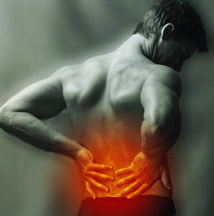Study finds acupuncture an effective treatment
By Colette Bouchez HealthScoutNews Reporter
MONDAY, Nov. 26 (HealthScoutNews) — New research shows that the Chinese treatment known as acupuncture may help control lower back pain without the added side effects of many pain control medications.An ancient Eastern science that has been steadily gaining popularity in the West, acupuncture uses the relatively painless placement of tiny needles into various nerve pathways on the body to help stimulate the production of natural pain relievers called endorphins.”Essentially, the acupuncture works somewhat like a pain-relieving drug in the sense that it provides temporary relief,” says study author Dr. Charis Meng, a licensed acupuncturist and rheumatologist at the Integrated and Complementary Care Center of Hospital for Special Surgery in New York City.Unlike traditional painkillers, which often require increasing amounts to get the same relief, acupuncture has somewhat of a cumulative effect, Meng says. “After a period of time, the number of treatments can be dramatically reduced while still maintaining the same levels of pain control,” she says.According to rehabilitation medicine expert and licensed acupuncturist Dr. James Dillard, for those who can’t or don’t want to use traditional pain medicines, acupuncture is becoming an accepted way to control chronic pain.

“The study is small but well done and is another entry in the growing body of evidence that shows acupuncture can be an accepted and very effective form of therapy for some people,” says Dillard, clinical advisor to Columbia University’s Richard and Hinda Rosenthal Center for Complementary and Alternative Medicine and assistant clinical professor at Columbia University College of Physicians and Surgeons.
In particular, he says, the benefits for the elderly can be extremely important.
“Most elderly people are already taking a number of medications for various health problems, so anytime you can cut down on the number of pills they have to take and still offer pain relief, that’s a good thing,” says Dillard.
Indeed, the six-week study did concentrate on elderly patients, with 40 participants all over the age of 60. Each complained of chronic low back pain for at least 12 weeks, and all had undergone various types of medical imaging to rule out spinal tumor, infection, fracture, as well as certain neurological symptoms. Patients who had previously undergone either acupuncture or lumbar surgery were also excluded.
“The study did include patients who suffered with sciatica or disk problems,” says Meng.
At the start of the study, patients answered questions and took a test that measured the degree of their pain.
The patients were then divided into two groups. One group of 21 patients continued taking standard pain therapy prescribed by their doctors, including non-steroidal anti-inflammatory drugs, muscle relaxants and acetaminophen (Tylenol), as well as back exercises.
The second group of 19 patients also continued taking their traditional therapy, but added twice-weekly acupuncture treatments for five weeks.
Pain scores were repeated two weeks into treatment, again one week later, and three weeks after the treatments ended.
The result, says Meng, was that “patients who underwent acupuncture had significantly less pain and disability in their lower back than patients who took standard traditional therapies alone.”
In addition, she says, results were so impressive that 17 of the 21 patients in the group that were allowed only standard therapy elected to begin a six-week acupuncture regimen when the study ended. They, too, experienced similar pain reduction.
The results were presented at the annual meeting of the American College of Rheumatology, which met earlier this month in San Francisco.
In addition to the lower back pain study, research also presented at the conference found acupuncture provided relief for patients with fibromyalgia, a chronic and painful muscle-related disorder affecting mostly women.
During this 16-week study, conducted by a group of Brazilian researchers, 60 patients received nightly doses of 25 milligrams of amitryptiline, an antidepressant found to offer some pain relief. Additionally, 20 of the 60 patients received a once-weekly acupuncture treatment, while 20 more received a weekly sham acupuncture treatment.
Using various pain diagnostic methods before and after the study began, the doctors concluded that, over the study period, only those patients who completed the acupuncture treatments had a measurable decrease in their pain.
“Fibromyalgia is a devastating problem that is frustrating for both doctor and patient because there are so few treatments that offer significant improvement in symptoms,” says Dillard.
“As with chronic back pain, anything that you can do to help these patients, particularly if it doesn’t require the use of more drugs, becomes an important contribution to their treatment and care,” says Dillard. This study, he says, is an important step in expanding the boundaries of treatment for patients with fibromyalgia.
What To Do

To learn more about acupuncture, including how to find an accredited therapist, visit the American Academy of Medical Acupuncture.
To discover more options for treating low back pain, visit the American Academy of Orthopedic Surgeons.
For more information on fibromyalgia, visit The Fibromyalgia Network.
SOURCES: Interviews with Charis F. Meng, M.D., rheumatologist, Integrated and Complementary Care Center, Hospital for Special Surgery, New York City; and James Dillard, M.D., medical director of the alternative medicine program, Oxford Health Plans and assistant clinical professor, Columbia University College of Physicians and Surgeons, New York City; November 11, 2001 paper, American College of Rheumatology 65th Annual Scientific Meeting
Copyright © 2001 ScoutNews, LLC. All rights reserved.



